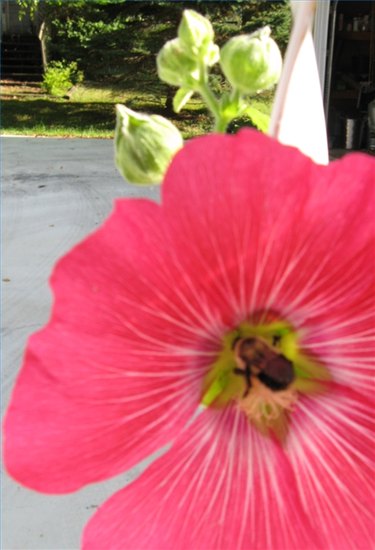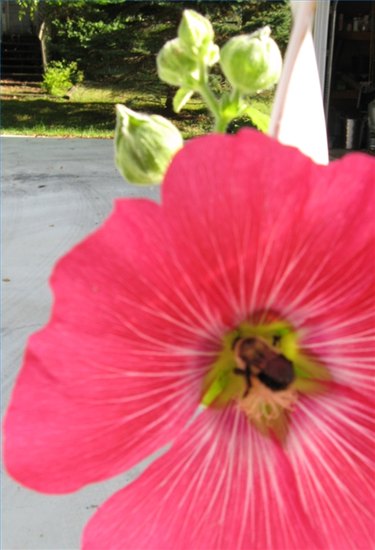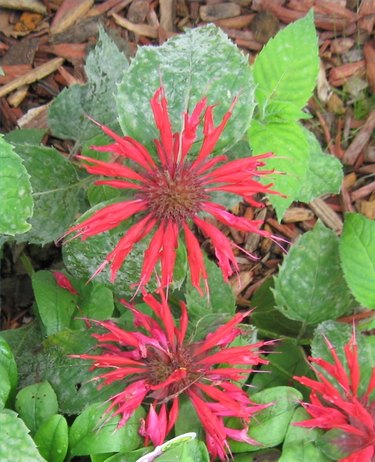
Introduction

Whether one or dozens, white or flaming fuchsia, flower petals show off for pollinators. Flower petals modify petal shape, color, scent, sensitivity and patterns to attract pollinators. Both flower and pollinator enjoy rewards through the process of mutualism. The flower spends less energy on pollen production and is successfully pollinated. The pollinator eats nectar and finds easy prey. Successful petal adaptation prevents hybridization. The flower keeps its species.
Pollinators
Video of the Day
Pollinators include birds, insects, bats, butterflies, bumblebees, bees and beetles. Petal shapes adapt to allow only certain pollinators to pollinate the flower. Flowers may attract only one species of pollinator or many. Flowers like goldenrod have a general flower/petal shape that attracts several kinds of pollinators. Some petals accommodate desired pollinators by opening during the time of day or night when the pollinator feeds.
Video of the Day
Petal Shapes

Petal shapes closely adapt to the pollinator's feeding, scent, sight and landing preferences.
Common petal shapes include bell/cup shapes like bluebells; tube shapes like trumpet vine; small flower cluster formations such as butterfly bushes; and long tubular petals like the cardinal flower. Petals form flat pinwheels, backward-bent petals like columbines, and may form lip-shapes like those of snapdragons. Some flowers have one petal larger than the other petals.
Petal shapes vary between flower species. Petals mimic insect shapes to trick pollinators. One wasp species pollinates an orchid with petals that look, smell and feel like a female wasp. Petals adapt to form landing areas for insects, to fit tongues, beaks and body sizes. Petals form curved passages that allow only a chosen pollinator species to enter the flower. Snapdragons are adapted to the weight of one bumblebee. The bumblebee lands on the specially designed petal lip, the petal then opens under the bumblebee's body weight. Hummingbirds hover to feed and prefer wide openings with tube-shaped recurved petals. Bats pollinate flowers with wide-open, sturdier petals that support their heavier weight.
Petal Colors

Pollinators see limited spectrum colors. Petals adapt by choosing the color of a specific pollinator. Bees do not see red, but do see yellow, blue and ultraviolet. Hummingbirds are attracted to the red-colored petals of flowers such as catmint. Butterflies see red colors including purples. White flowers are visible to night pollinators like bats and moths. Petals sometimes use two colors, for instance red and yellow, to attract more than one kind of pollinator. Color patterns resembling landing strips guide the pollinator to zero in on the pollen.
Petal Scents
Petal scents derive from essential oils made of esters. The oils attract bees, butterflies, moths and other insects.
Bees pollinate flowers with sweet, light fragrances like those found in sages, mints and clovers. Petals scented in strong sweet scents attract night-feeding pollinators, especially moths. Petals have adapted to make rotten flesh scents that attract moth and fly pollinators.